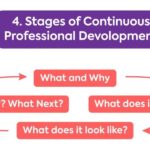Value-add deals in commercial real estate can be a lucrative investment strategy for those seeking to maximize returns. These deals involve acquiring underperforming or distressed properties, implementing improvements, and then leasing or selling the property at a higher value. To gain expert insights on identifying value-add opportunities, we spoke with commercial real estate professional Keith Rummel, who has years of experience in this niche market.
1. Location
According to Rummel, the first and most crucial factor to consider is the location of the property. A value-add deal in a prime location can benefit from higher demand, better leasing rates, and more potential tenants. Research the surrounding area for development trends, demographics, and the availability of essential amenities such as public transportation, shopping centers, and schools. These factors can help you gauge the property’s growth potential and attractiveness to prospective tenants.
2. Property Type
Rummel suggests that investors should be familiar with the various types of commercial properties (office, retail, industrial, multifamily, etc.) and their respective market dynamics. “Understanding the fundamentals of each property type will help you identify the best value-add opportunities,” he explains. Market trends, vacancy rates, and tenant preferences can all impact the success of a value-add investment.
3. Property Condition
An essential aspect of value-add deals is assessing the property’s physical condition. Rummel recommends investors seek out properties with deferred maintenance, outdated designs, or inefficient layouts. These factors can offer the potential for significant improvements that will ultimately enhance the property’s value. A thorough inspection and assessment of the property will help you determine the extent of renovations needed and the associated costs.
4. Financial Analysis
Rummel emphasizes the importance of conducting a thorough financial analysis before pursuing a value-add opportunity. This process involves evaluating the property’s current and potential future cash flow, capitalization rate, and return on investment. “Understanding the financial metrics will help you determine if the potential returns justify the investment and the risk associated with the project,” he says.
5. Market Demand and Rent Growth Potential
Rummel advises investors to analyze market demand and rent growth potential in the area where the property is located. Value-add opportunities are more successful in markets with strong demand and limited supply. Additionally, consider the potential for rent increases after improvements have been made. Higher rental rates can lead to increased cash flow and ultimately a higher property value.
6. Exit Strategy
Before investing in a value-add property, Rummel recommends that investors have a clear exit strategy in mind. Whether the goal is to hold the property long-term, refinance, or sell after improvements, understanding your end game will help guide your investment decisions and ensure a successful outcome.
Value-add opportunities in commercial real estate can be highly rewarding for investors who understand the market and can identify properties with untapped potential. By considering location, property type, condition, financial analysis, market demand, and exit strategy, investors can uncover hidden gems and maximize their returns. As a seasoned professional in the field, Keith Rummel’s insights provide a valuable starting point for those looking to pursue value-add deals in commercial real estate.
To learn more about Keith Rummel, Click here.
















